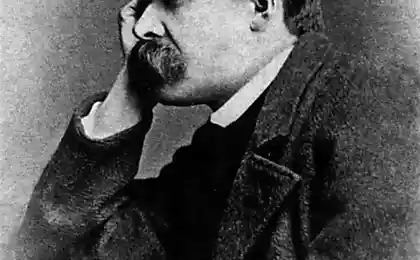179
Why being a workaholic is unprofitable and even harmful

A workaholic is like a motorist who always drives in first gear because he is content with the process and does not pursue any goals. This precise and capacious comparison illustrates the essence of the problem: overwork often leads to paradoxical results when enormous efforts are not translated into corresponding achievements. Why can the cult of work, so revered in modern society, in fact be not only unprofitable, but also frankly harmful?
According to research by the World Health Organization, people who regularly work more than 55 hours a week have a 35% higher risk of stroke and a 17% higher risk of death from coronary heart disease compared to those who work the standard 35-40 hours.
The paradox of declining productivity
Imagine an athlete training non-stop, giving up periods of recovery. The result of this approach is predictable: instead of increasing results, overtraining, injuries and regression occur. Similarly, the human brain works in the context of work.
Research in neurophysiology proves that prolonged concentration without interruptions leads to mental fatigue and significant cognitive decline. Starting from about 6 hours of continuous operation, the quality of decisions made and the speed of information processing steadily decline. By the 10th hour of work, most people are functioning at a level comparable to light alcohol intoxication, even if they subjectively believe they are productive.
The law of diminishing returns on labor
Economists have long identified a pattern: after a certain point, each additional hour of work brings less and less increase in the result. In some cases, additional hours of work can even worsen the overall result due to errors made in a state of fatigue. This explains why a workaholic working 80 hours a week rarely performs twice as well as a 40-hour worker.

The Biological Cost of Workaholism
The human body is a complex system, evolutionarily not adapted to prolonged periods of high stress without recovery. Workaholism triggers a cascade of physiological reactions that destroy health in the long run:
- Chronicly elevated levels of cortisol, a stress hormone, suppress the immune system, making the body more vulnerable to disease.
- Disturbances of circadian rhythms due to irregular schedules or night work increase the risk of developing metabolic syndrome.
- Long stay in a sitting position increases the risk of cardiovascular diseases and problems with the musculoskeletal system;
- Constant psycho-emotional stress depletes the neurotransmitter systems of the brain, which can lead to the development of anxiety disorders and depression.
Social maladjustment and depletion of personal resources
The human being is not an isolated system functioning only in the context of work. The quality of our lives is largely determined by the richness of social connections and the diversity of life experiences. Workaholism inevitably leads to the impoverishment of these areas:
The breakdown of close relationships is due to chronic time and emotional resources. Workaholics families often break up, and children grow up with emotional trauma due to a lack of parental attention. Studies show that children of workaholics have an increased risk of developing their own psychological problems, including low self-esteem and anxiety disorders.
The narrowing of interests to work questions leads to a depletion of creativity and a decrease in the ability to generate original ideas. Paradoxically, over-focusing on work often becomes an obstacle to professional growth, as new ideas and approaches are often born at the intersection of different fields of knowledge and experience.
Professional impasse and the phenomenon of “glass ceiling workaholic”
One of the most bitter truths that workaholics face sooner or later is that career growth and professional recognition don’t always correlate with hours worked. In the modern economy, especially in highly intelligent industries, the decisive factors for success are not the duration of work, but:
- Ability to think critically and see non-standard solutions to problems
- Emotional intelligence and effective communication skills;
- Strategic vision and ability to prioritize;
- Flexibility of thinking and willingness to change.
The Economics of Time: The Fundamental Misconceptions of Workaholics
The basic misconception of the workaholic is the incorrect assessment of the cost of their time. Every hour of life is a limited and non-renewable resource. When a person spends a disproportionate amount of time working, they are actually investing their most valuable assets in activities with diminishing returns. From the point of view of economic efficiency, this is equivalent to investing capital in a knowingly unprofitable enterprise.

The Way to Conscious Productivity: An Alternative to Workaholism
The exact opposite of workaholism is not laziness or idleness, but conscious productivity – an approach in which the quality of work and its result are valued higher than the number of hours spent. Studies show that people who practice a conscious approach to work achieve better results with less time and energy.
Practical recommendations for overcoming workaholism:
- Introduce the Pomodoro techniqueWork for 25 minutes, then take a 5-minute break. After four such cycles, take a longer break of 15-30 minutes. This system helps maintain a high level of concentration and prevents mental exhaustion.
- Use the 80/20 Rule (Pareto Principle)Identify 20% of tasks that yield 80% of results and focus on them first. This will help to optimize the workflow and avoid wasting time.
- Set clear boundaries between work and personal lifeCreate rituals that mark the beginning and end of the day, especially if you work from home. For example, a morning walk can symbolize a “way to work” and an evening shower can symbolize a “coming home.”
- Practice conscious disconnection periodsRegularly perform “digital detoxes” when you completely disconnect from working communications. Studies show that periods of total shutdown are necessary to restore cognitive resources.
- Invest in a variety of experiencesHobbies, travel, communication with people from different spheres of life enrich your intellectual baggage and stimulate creative thinking, which ultimately has a positive effect on professional activity.
Conclusion: Rethinking Success and Productivity
Workaholism is not just a bad habit, but a deeply rooted belief system about work, success, and self-worth. Rethinking these beliefs requires not only changing behavioral patterns, but also transforming internal attitudes.
Real efficiency lies not in the number of hours worked, but in the ability to achieve meaningful results with optimal resources. As a car that moves in a gear that is suitable for a particular situation, a person must find the optimal mode of operation that provides a balance between productivity and energy conservation.
Ultimately, history rarely remembers people for how many hours they spent at work. She remembers those who created something meaningful, changed the world for the better, or just lived a full, harmonious life. And achieving these goals is rarely correlated with the number of hours spent at the desk.
Glossary of terms
workaholism
A psychological state characterized by a compulsive need to work, an inability to regulate work habits, and an excessive preoccupation with work to the detriment of other areas of life. It is often classified as a behavioral addiction.
Emotional burnout syndrome
A state of physical, emotional and mental exhaustion caused by prolonged exposure to emotionally stressful and stressful situations. It is characterized by depletion of emotional resources, depersonalization, and decreased personal achievement.
Law of diminishing returns
The economic principle according to which, with an increase in one factor of production (e.g., labor costs), with the rest unchanged, from a certain point on, each additional unit of variable factor gives an ever smaller increase in output.
The Pareto Principle (The 80/20 Rule)
The rule of thumb is that 80% of results are achieved with 20% effort. In the context of work, this means that 80% of meaningful results yield 20% of the most important tasks.
Pomodoro technique
Time management method developed by Francesco Cirillo in the late 1980s. It involves partitioning work into intervals (usually 25 minutes) with short breaks between them to increase mental activity.
Circadian rhythms
Cyclic fluctuations in the intensity of various biological processes associated with the change of day and night. Violation of circadian rhythms can lead to various physiological and psychological disorders.
Conscious productivity
An approach to work characterized by full involvement in the current task, a clear understanding of its importance and a strategic allocation of efforts to achieve maximum results with optimal time and energy.
Ergie Bardhollari: The phenomenon of the humble star of modeling
14 Little Things That Matter for a Happy Relationship























